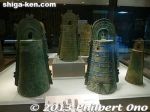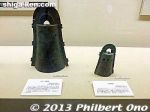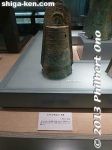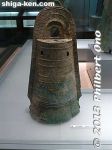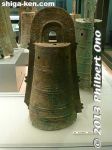 Image search results - "bronze" Image search results - "bronze" |

Dotaku-kun from Yasu, Shiga. Modeled after Japan's largest ancient bronze bell discovered in Yasu. ドウタクくん (滋賀 野洲市)
|
|

Museum entrance with a sign indicating the Homecoming Exhibition for Japan’s Largest Bronze Bell to mark the museum's 25th anniversary.
|
|
|
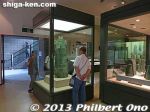
Japan's largest dotaku bronze bell on a special homecoming display at Dotaku Museum in Yasu, Shiga.
|
|
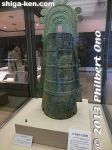
Japan's largest dotaku bronze bell is 134 cm high and dated from around 100 BC to 300 AD (Japan’s Yayoi Period).Dotaku bells in Kinki area are known for their protruding "ears," whereas dotaku found in Shizuoka (another dotaku hotbed) usually don't have ears.
|
|
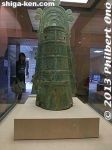
Japan's largest dotaku bronze bell on special display at Dotaku Museum in Yasu, Shiga. This bell was used as a religious ceremonial piece rather than as a real bell.
|
|
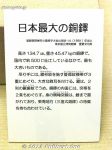
About Japan's largest dotaku bronze bell.
|
|
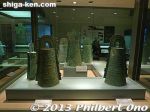
A whole bunch of other dotaku were found in the same area as late as 1962. Most of the bells displayed are replicas, but a few are genuine.
|
|
|
|
|
|
|
|
|
|
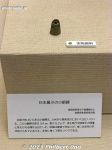
Japan's smallest dotaku. 3.4 cm high.
|
|

Normally, the largest dotaku is not exhibited here. It is in the Tokyo National Museum.
|
|

This is how the dotaku were buried.
|
|

The dotaku were nestled inside each other. These bells are dated from around 100 BC to 300 AD. The bells were not really used as bells. They were more for decorative and religious purposes.
|
|
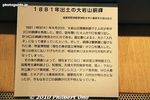
Two of the dotaku were acquired by the Tokyo National Museum. The remaining dotaku were scattered among various people. Their whereabouts were unknown until an investigation found 12 of them at temples and Japanese and overseas museums.
|
|

Mold for making a dotaku. Yasu's dotaku found their way to the following overseas museums: Museum of East Asian Art in Cologne (Germany), Asian Art Museum of San Francisco (USA), and Minneapolis Institute of Arts (USA).
|
|

Monument marking the site where the dotaku were found. It's frustrating that none of the original dotaku discovered in Yasu are in Yasu. Another case of bungling and ineptness by local officials. Even one original dotaku would make the museum busier.
|
|

Monument marking the site where the dotaku were found. In 1962, ten more dotaku were found in Yasu.
|
|

Yasu's official mascot, named Dotaku-kun, is modeled after a dotaku.
|
|
|
|
|








